Before becoming known as a granary, Jiansanjiang, a grain production base in Northeast China’s Heilongjiang, was once called “Beidahuang,” or "great northern wilderness," for its desolate landscape.
In September 2018, President Xi Jinping inspected Jiansanjiang to learn about its harvest.
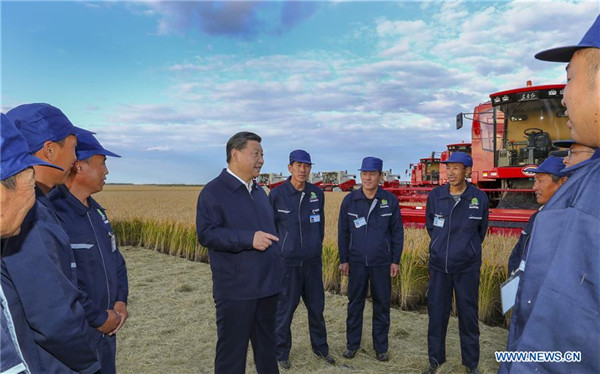
Xi talks with workers at Qixing farm, Northeast China's Heilongjiang Province, Sept. 25, 2018. (File Photo: Xinhua)
"Beidahuang has gone through tremendous changes in the past half a century. Agricultural mechanization, information and intelligence are amazing and inspiring," Xi said.
At Qixing farm in Jiansanjiang, driverless machines work in experimental fields as new technologies and business forms are tried out.
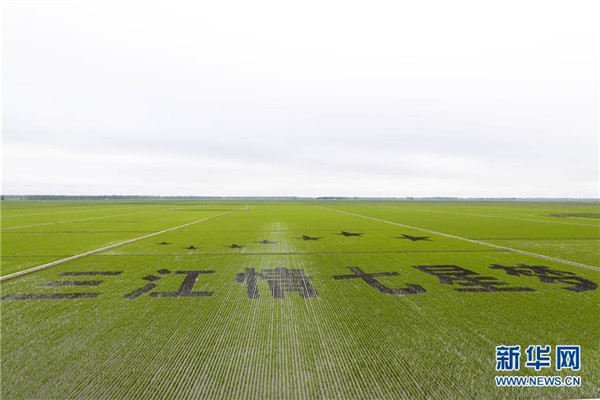
A photo taken on June 15, 2020 shows Qixing farm, northeast China's Heilongjiang Province. (Photos: Xinhua)
Wang Wei is the deputy Communist Party of China (CPC) Party chief at the Jiangsanjiang branch company of Beidahuang Group.
"During this year's Two Sessions, President Xi compared agricultural modernization to a 'gold carrying pole' for farmers. We are indeed carrying the gold poles!" Wang said.
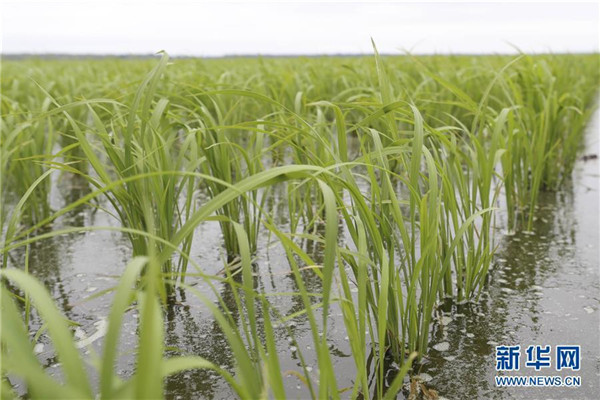
A photo taken on June 15, 2020 shows rice growing in a paddy field in Qixing farm, northeast China's Heilongjiang Province.
PhD farmer
Zhao Guangming said his parents were worried when he decided to work in Jiansanjiang after graduation.
Before getting his PhD degree at China Agricultural University in Beijing, Zhao went to Jiansanjiang for seven years running to conduct research.
Rejecting job invitations from well-known Chinese and international companies, Zhao instead collected 350,000 yuan (about $50,000) and contracted 30 hectares of paddy field in Jiansanjiang.
Zhao reasoned with his parents that the government was supporting agriculture and it was a promising industry lacking in fresh graduates.
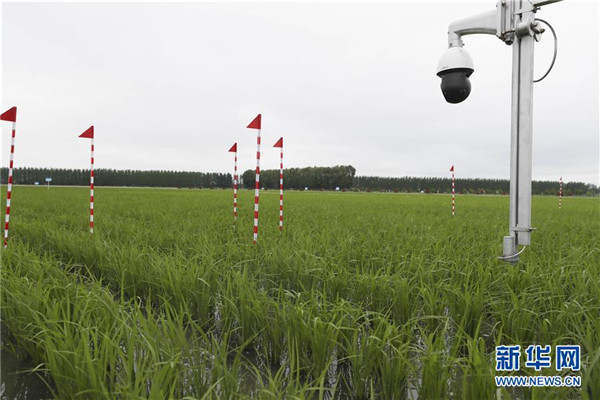
A photo taken on June 15, 2020 shows a monitoring facility at Beidahuang Jiansanjiang national agricultural science and technology park, northeast China's Heilongjiang Province.
Monitoring sites and equipment are set up in the field, covering nearly 81,333 hectares of land and providing real-time information of crop production, explained Han Tianjia, vice manager of the Qixing farm.
"They form the big data of the farming environment. Smart machines help agricultural production go intelligent," Han said.
Farmers that relied on experience today increasingly look to data.
Zhao Guangming initiated an agricultural cooperative of rice planting and provided full service based on his knowledge.
Fifty-two farmer households have joined the cooperative and their income has increased 600 yuan per 667 square meters, or Chinese mu.
Over the past decade, Jiansanjiang has attracted more than 560 university graduates like Zhao.
Driverless machines
During his inspection tour of the Qixing farm in September 2018, Xi talked to several drivers of harvesters. Lu Xiangdao was one of them.
But today, Lu no longer drives a harvester.
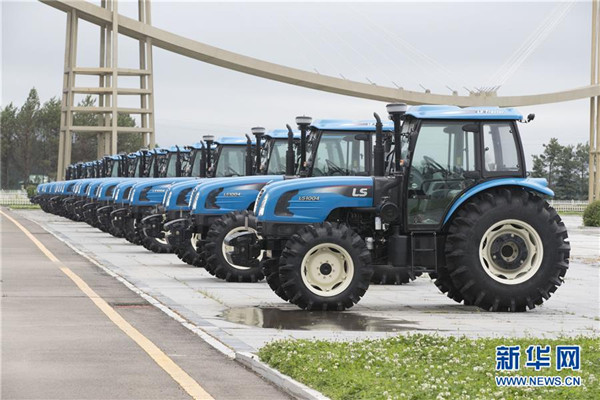
A photo taken on June 15, 2020 shows large farming machines at Beidahuang precision agriculture and agricultural machinery center, northeast China's Heilongjiang Province.
In an experimental paddy field, a driverless machine transplants rows of rice seedlings.
"It is equipped with the BeiDou Navigation System and can be manipulated via a mobile app," said Lu.
Qixing farm is one of six unmanned farms in a demonstration project in Jiansanjiang this year.
Lu Shiran, Lu Xiangdao's grandfather, said he was at first surprised to see a driverless machine in the field.
"I arrived at Qixing farm in 1959 and there was only one tractor in more than 667 hectares of field. To earn time, most work was done manually," Lu Shiran said.
As a tractor driver, Lu Xiangdao's father Lu Shumin also understood the importance of agricultural mechanization.
In 2004, China rolled out subsidies for farm machinery.
Farm work in Jiansanjiang has been mechanized, with 383,000 farm machines of all kinds.
New seeds
Zhu Yan and his family started to plant Sanjiang 6 rice developed by the Qixing farm.
Zhu's father worried about the yield of the high-quality rice, whose lodging resistance was poor based on his past experience.
But Zhu persuaded his father that high-quality varieties were promising.
Zhu's long-term plan: high yield, increased resistance, a large market and a better income.
Zhu's confidence derived from the agricultural technology extension center at the farm.
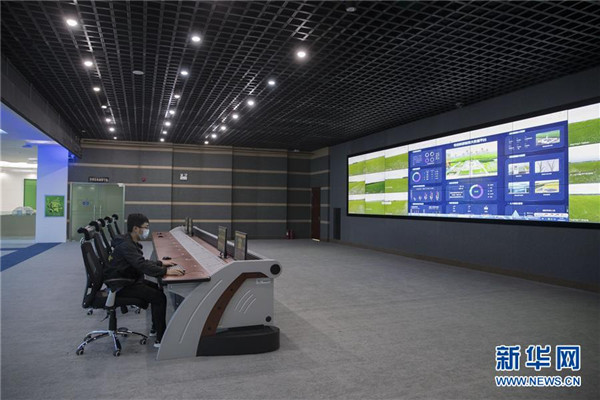
A man operates an information platform of agricultural Internet of Things at Beidahuang precision agriculture and agricultural machinery center, northeast China's Heilongjiang Province, June 15, 2020.
High-quality varieties were tested here for three to five years by the director Li Xiaohui and his colleagues, before being promoted.
Today nearly 40,000 hectares of paddy fields in Qixing farm are used to grow high-quality varieties and 70 percent are Sanjiang 6.
When President Xi inspected Jiansanjiang in 2018, he held a bowl of rice in his hands: Sanjiang 6.
"To employ technology in farming is our lifelong pursuit," said Li Xiaohui.
(Translated by Liu Xiaochi)


